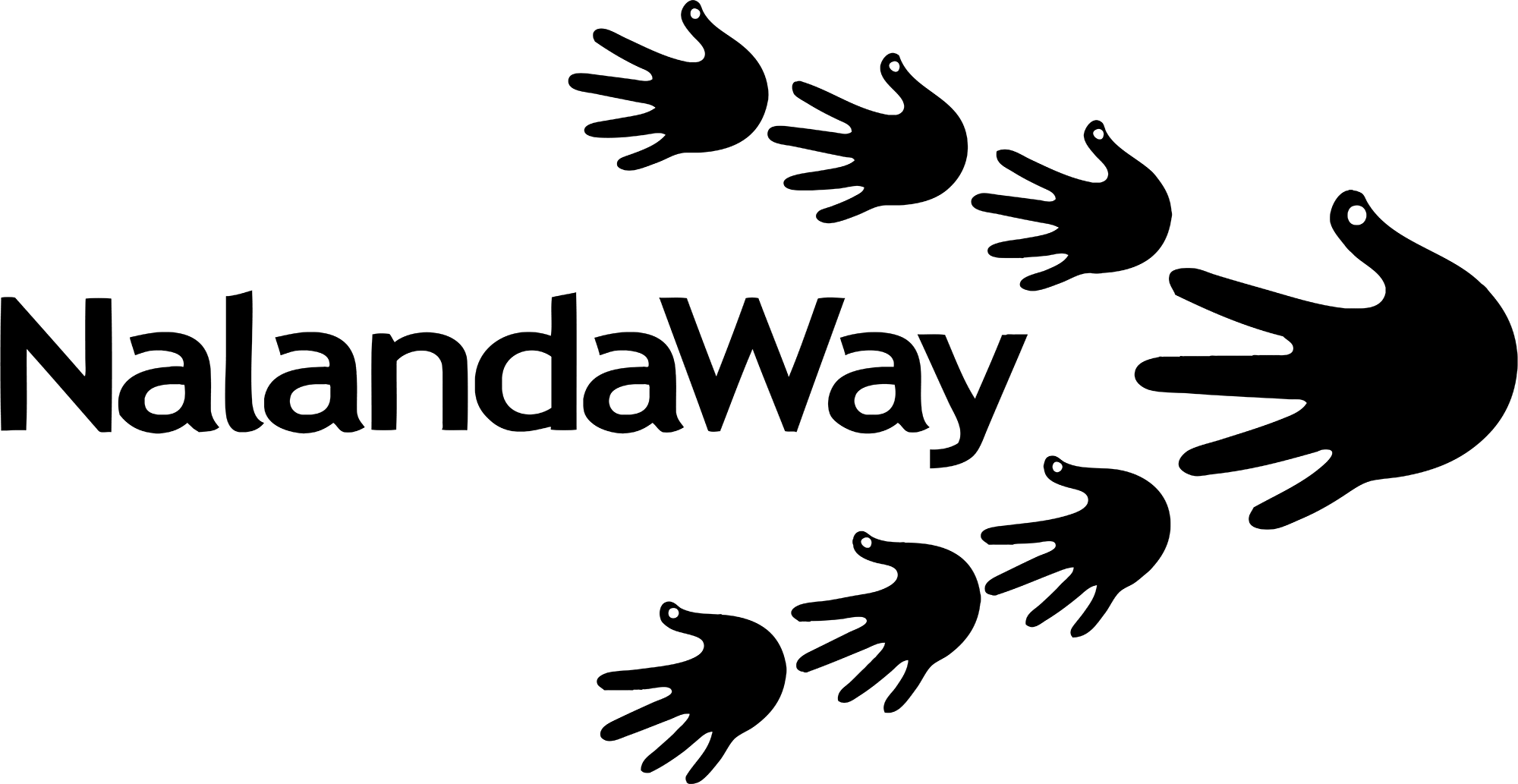Singapore International Foundation x NalandaWay Foundation
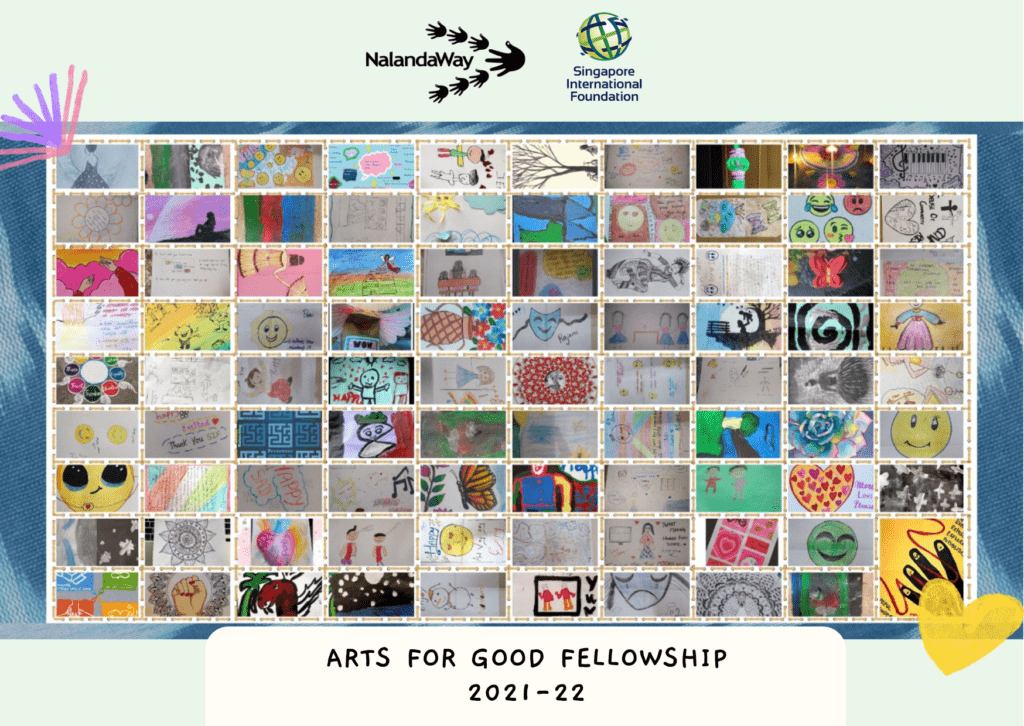
“For centuries, artists have created work that explores, reflects on and advocates for social issues. Art offers powerful opportunities to express our common humanity, challenge assumptions, spark conversation, connect diverse people, inspire wonder, imagine new solutions, and promote action for positive change.”
– Jenny Friedman, Executive Director of Doing Good Together
Held annually by the Singapore International Foundation, the Arts for Good Fellowship taps into the power of arts and collaboration to explore and work towards a social cause. The Fellowship brings in artists, arts administrators, creatives, programmers and social sector professionals from across the world, to come together on a journey of learning, sharing and collaboration.
After a one year hiatus owing to the Covid-19 pandemic, the 4th edition of the fellowship was held virtually with NalandaWay Foundation as the key partner. The theme of this year’s fellowship was “Arts and Well-being for Children and Youth in a Digital Future”, which was explored through a balanced curation of sessions put together collaboratively by Singapore International Foundation and NalandaWay Foundation.
Over the span of 5 months, initiated in September and concluding in February, the fellowship saw a group of fellows, organisers and children create and grow together. The virtual medium allowed for the fellows to meet beyond the constraints of the physical world and create deep bonds and networks transcending borders.
THE SINGAPORE LEG
The first few days of the fellowship, initiated in September 2021 were dedicated to aligning and exploring this diverse and new space – learning about and from each other. A series of sessions were curated by SIF to explore youth and community engagement and strategies in creating and using art and tech for good.
As a part of the initial few days, NalandaWay Foundation introduced their work across projects and laid down the premise for the community art projects that they would be collaborating on with the fellows. This involved talking briefly about the contexts, challenges and needs of the children and adolescents that form these communities.
BRIDGING SESSIONS
The fellows came together once a month for the next 4 months to do the groundwork for the community art projects that are an integral part of the fellowship.
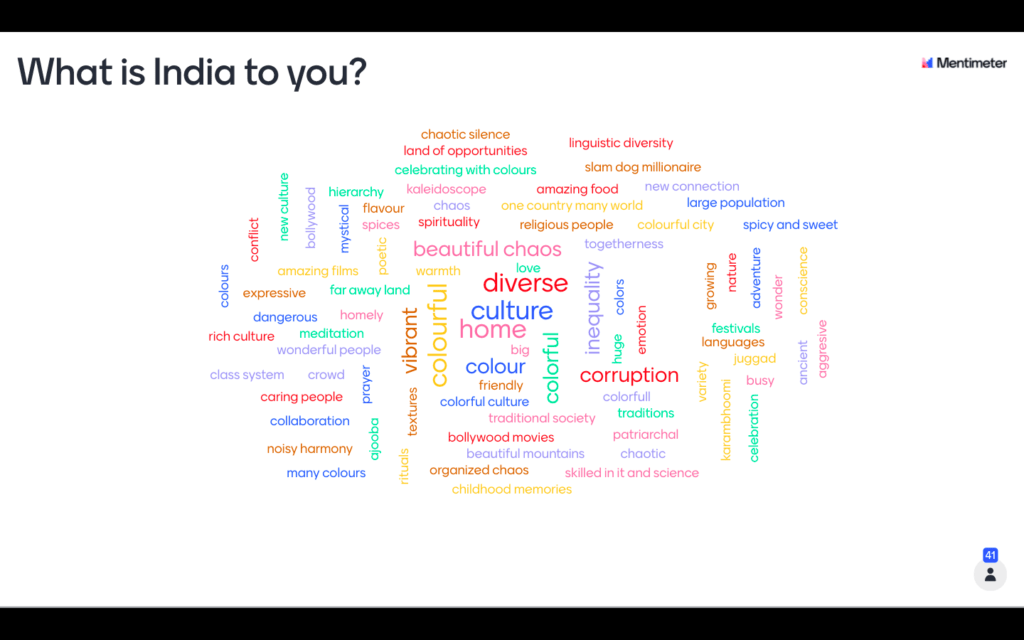
Cultural mapping and planning community art projects
Understanding the nuances of the lives of the people we work with is an important first step in designing a project for them. An introduction to the communities enabled the fellows to group themselves based on their experience, inclination and the needs of each community. An e-meet was organised to bring together the fellows and communities in smaller groups for them to interact, get to know each other and initiate building rapport. Co-led by the children and the fellows, there were ice-breaking activities, creative introductions and open sharings that filled all the breakout rooms. The energy from the session lingered on, inspiring ideas in the fellows.
Over the next few months, the fellows worked with the NalandaWay coordinators in each of their groups to develop an art project idea which would be further refined and implemented in the final days of the fellowship. The expertise and creativity that the fellows brought in were grounded in the context of the communities through inputs from the field.
A session where Arts for Good fellows across three cohorts spoke about their work in collaborating on arts-based initiatives for social good; and Partners for Youth Empowerment’s (PYE) introduction to the Creative Empowerment Model (CEM), a framework for designing and leading transformative programmes for communities helped the fellows explore their community project ideas at a deeper level.
THE INDIA LEG
The India leg of the program, curated by NalandaWay Foundation brought in a focus on the intersection between wellbeing and art through various sessions that sparked discussion, questioning and introspection. Art was not only an output in this fellowship but more importantly, was a means of exploring the self, expressing and collaborating.

This phase was initiated by (Re)Discovering Indian Music, an interactive session with the Indian Music Experience Museum for the fellows to understand more about India, its music and culture.
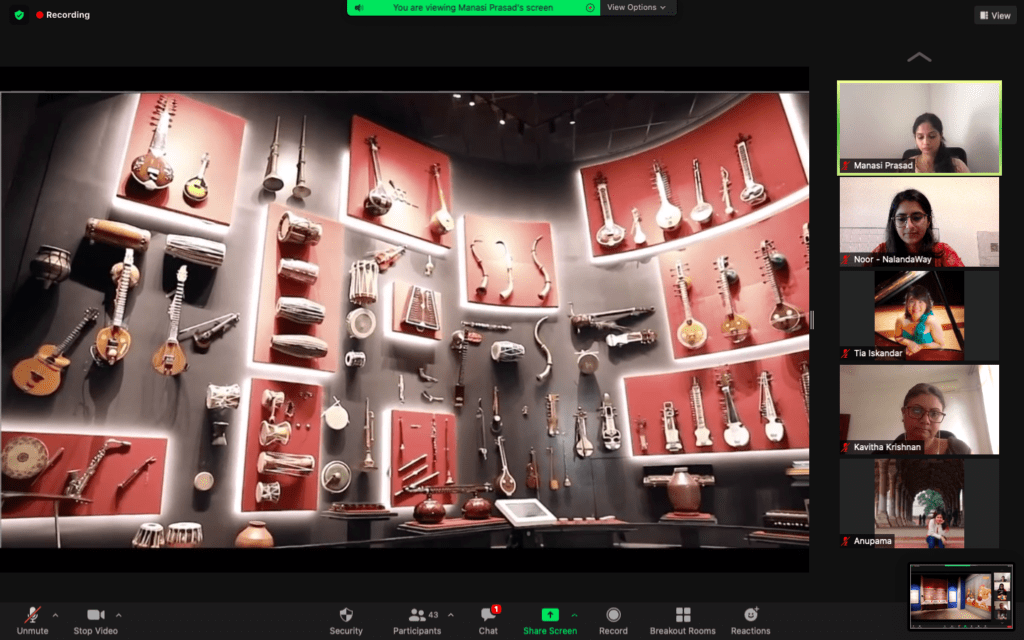
Inclusion with a Gender lens by Ms Sohini Bhattacharya explored the fellows’ understanding of inclusivity, dissecting the visible and invisible barriers that make inclusion (in the truest sense of the word) difficult to take place in their work and lives. There was a focus on ‘turning inwards’ and starting from ourselves as well as acknowledging our own level of awareness, openness, and information on the subject. A specific focus on gender sensitivity provoked explorations into our responsiveness to the needs of different genders.
[Art]i(fact): Exploring Creative Conversations Through Our Lived Experiences by Nicole Kay and Yehuda Silverman merged two worlds of narrative storytelling and collaborative autoethnography. The fellows creatively co-constructed compassionate short stories from a healing perspective by utilising the digital arts.
During this session, there was time for reflection, collaboration, and sharing of stories at the end of which fellows had experientially learned new skills in being documentarians and nurturing deeper interconnections that may support them in their professional and personal lives.
A Masterclass on Addressing Grief / Loss by Ms Anjali Singla explored how grief and loss manifest in our physical bodies and how we can hold space for ourselves and others. The session was centred around learning the pillars to holding space – about how this important practice leads us toward greater liberation and love in our relationships, including with ourselves. Basic Somatic principles were introduced as a means to cope, facilitate self-reflection and self-care. An open and safe space for sharing and reflection, allowed the Fellows to explore sensitive and challenging situations they have had to deal with in their practice and ways to overcome these.
Singapore-India Panel Discussion
The panel discussion titled “The Courage to Continue: Building Resilience for Arts Practitioners and their Communities” explored how practitioners in the arts and social sectors have, and can gather the strength and courage to continue being the change and making the change during these trying times.
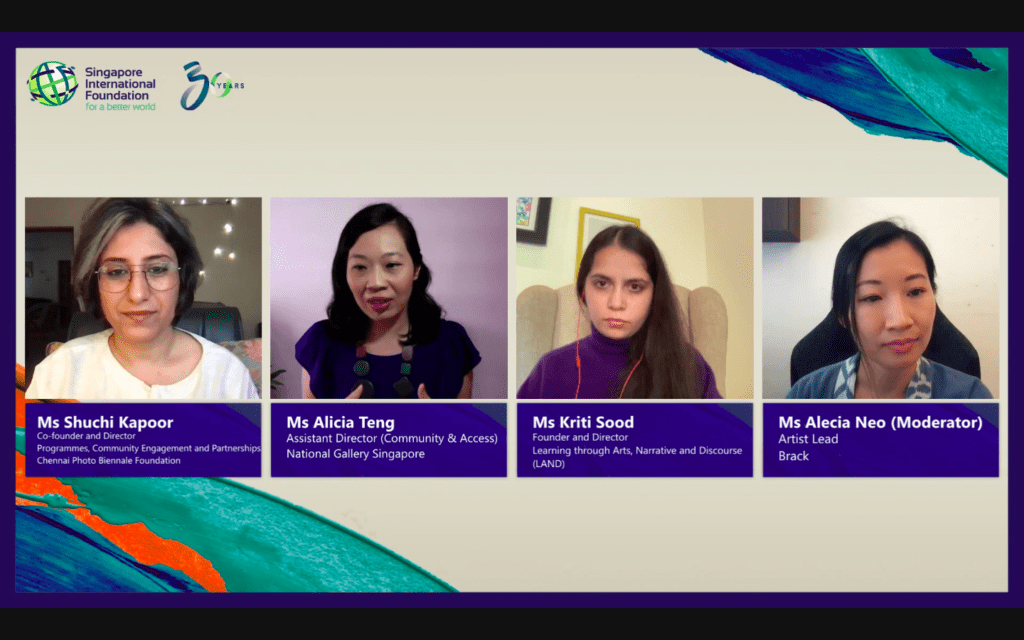
The session panelled by Kriti Sood, Shuchi Kapoor and Alicia Teng and moderated by Alecia Neo provided insights on the critical role the arts can continue to play in enhancing social-emotional wellbeing and building resilience. It also shed light on how practitioners and communities in India and Singapore have been finding creative ways to journey through tough times, and managing the effects of the pandemic on mental health.
COMMUNITY ART PROJECTS
Aligned through dialogue, discourse and theme-centric sessions, the fellows from diverse personal and professional backgrounds found a common purpose within the context of this fellowship. The Community Projects provided an opportunity to put this purpose into practice, tapping into the expertise of the fellows to address social issues in disadvantaged sections of society.
Four groups of fellows worked to develop a project with different communities in India that NalandaWay Foundation has been working with. Each group built a project relevant to the cultural context of the community they were paired with, customising the use of arts to address needs that have been recognised within the lives of these young people. All four projects were unique, creative, and engaging.
Boys in Chennai
Boys, transitioning from childhood to adolescence in a Government-run children’s home in Chennai have been increasingly engaging with art as a part of the Vanam Vasapadum project of NalandaWay Foundation. Bullying, aggression, conflict within the group and with authority figures have been prevalent concerns, with the added challenge of suppression of emotions within males in the society they are being brought up in.
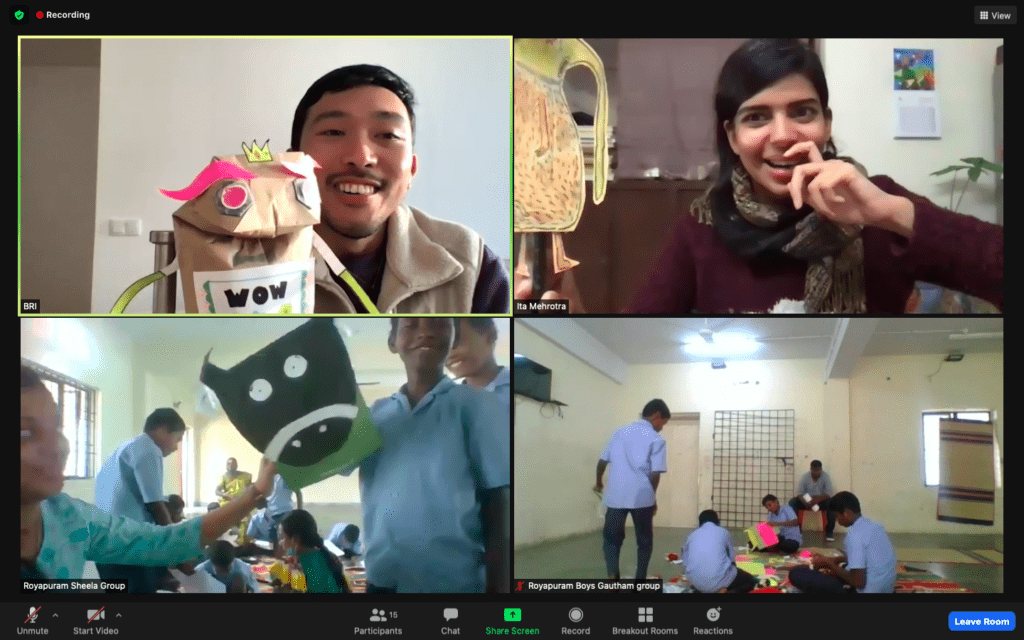
Cognizant of these needs, the group of fellows narrowed their focus to nonviolent communication and conflict resolution. They addressed these topics very sensitively and creatively through engaging sessions which guided the boys to first learn the skill of puppet making (sock, stick and bag puppets) and then explore this with their own quirks and additions. The boys then grouped up to discuss situations that they have faced and create one story per group that addresses the conflict and reaches a resolution towards the end.
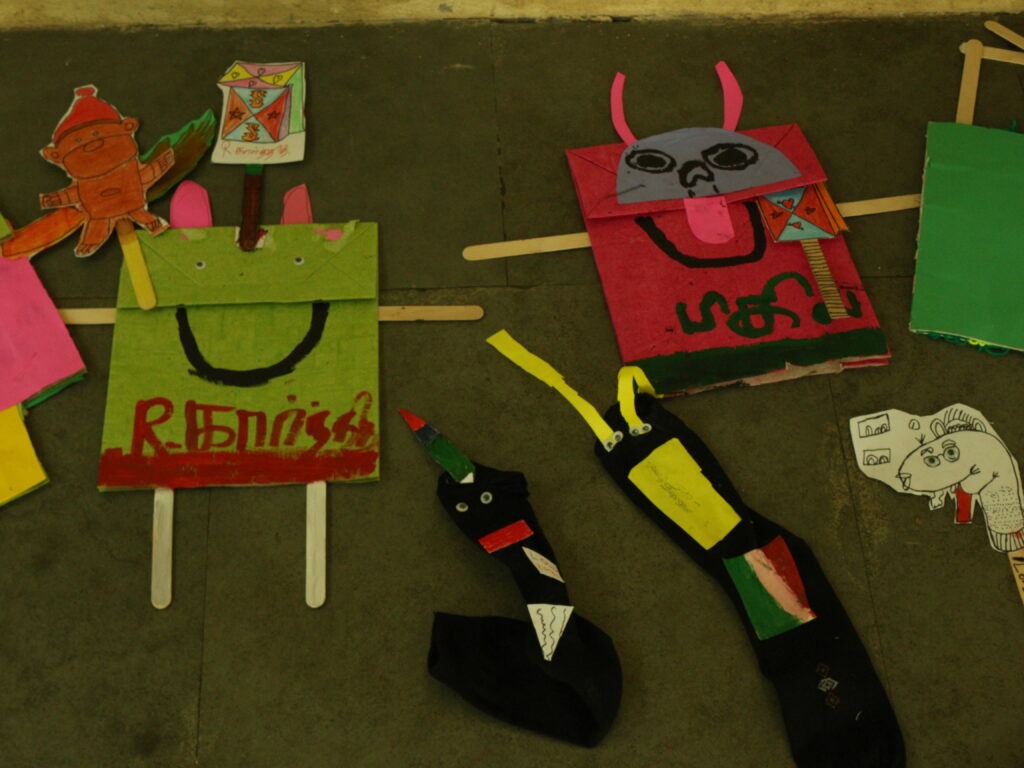
This story was brought to life through role-playing using the puppets they had previously created. Channelled through puppets and play-acting, this process provided a safe modality for the boys to create, emote and express to some degree. It was heartwarming to see comfort in engaging with conflict and a collaborative effort in seeking resolution.
Girls in Bangalore
Adolescent girls who reside in a children’s home in Bangalore have been working on their holistic development, through NalandaWay’s Project Sakhi. With histories of trauma, abuse and neglect; identity exploration, sense of belongingness and negotiation have been a few among other domains of focus.
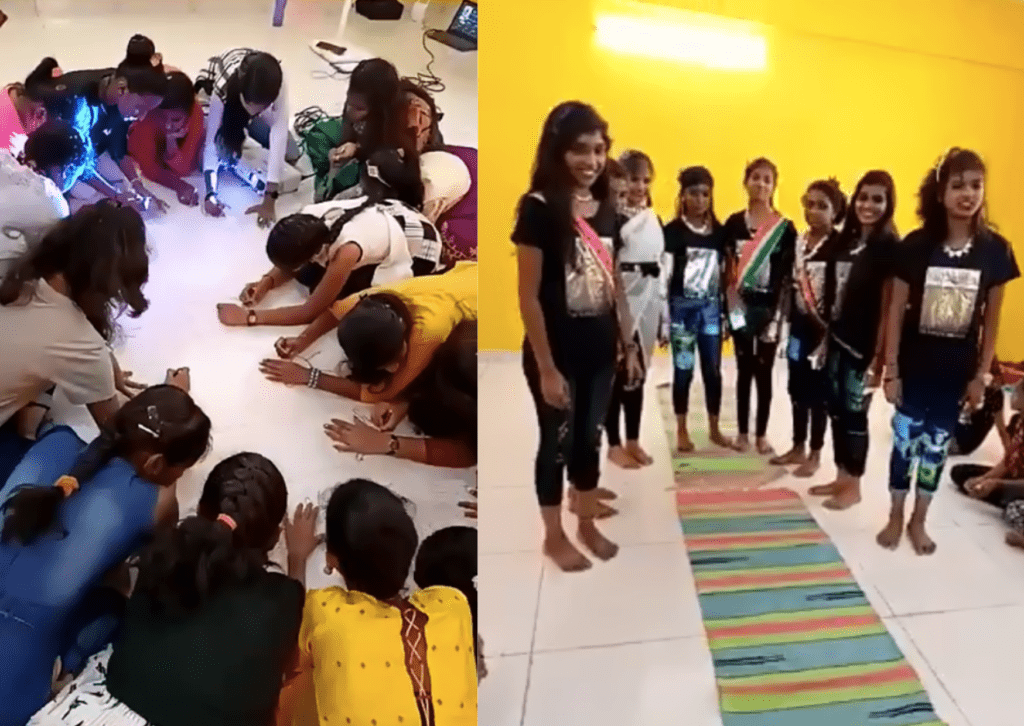
The group of fellows paired with these girls designed a project that builds a sense of sisterhood within the group, facilitating an exploration of the girls’ strengths as affirmations of what they bring into the world they live in. With an “aspiration lens”, they also explored how the girls could tap into their strengths to translate their dreams into reality in the future.
Multiple virtual interactions involving fun activities and honest sharing helped develop a bond early on. The girls chose to envision this project as a sisterhood island that they aptly named “Savira Kanasugala Dweepa” in Kannada, which translates to “An Island of a Thousand Dreams”. This set the purpose for the rest of the journey.
Through an exploration of their dreams, the girls promptly wrote and composed two beautiful songs bringing out each one of their aspirations. The group went on to explore the girls’ existing strengths by identifying the ‘superpowers’ they possess. These included inspiring and unique qualities like confidence, assertiveness, kindness, cleanliness, patriotism, identifying negativity, having beautiful hair and watering all plants that she sees!
Keeping these in mind, the girls created costumes and accessories that they felt helped give their superpowers tangible form. They presented these through a ‘fashion parade’ on the final day along with each girl describing their strengths, dreams and how their costumes embody these.
The depth of thought that went into this exploration and creation was impressive. The superpowers and dreams lingered on, with the fellows humming the tune of the songs till the end of this project.
Girls in Trivandrum
The group of adolescent girls in Trivandrum, residing in a Government-run children’s home have been a part of NalandaWay’s project Sakhi. These girls, hailing from difficult backgrounds found a safe space within the home and their peer group.
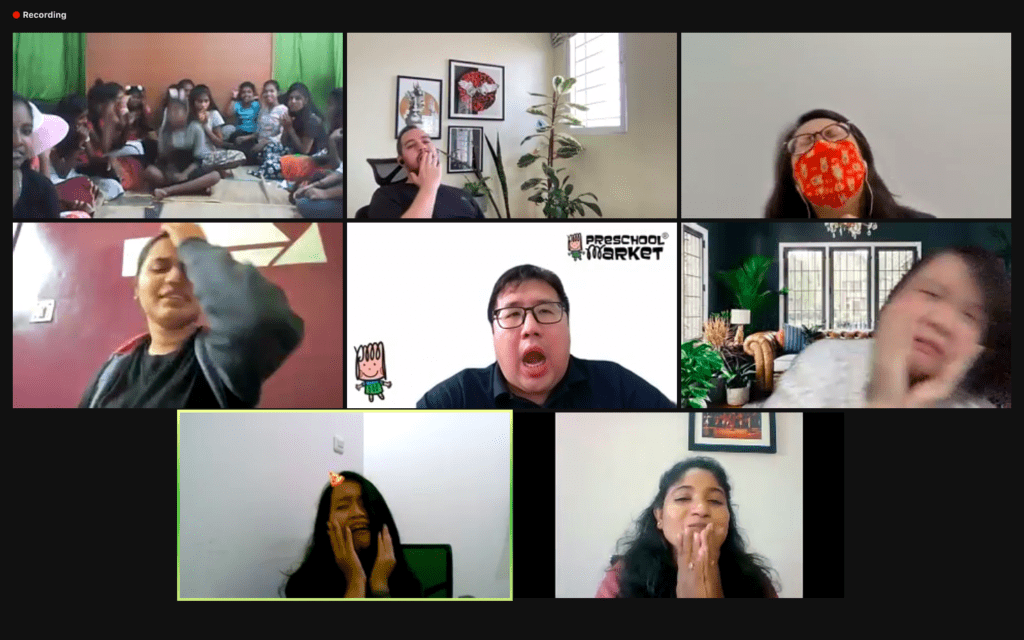
The group of fellows working with these girls recognised the dreams they have for themselves and chose to explore these. Through the creation of a wall of “butterfly dreams”, the girls got in touch with their emotions and aspirations, embodying the flight and positivity of butterflies.
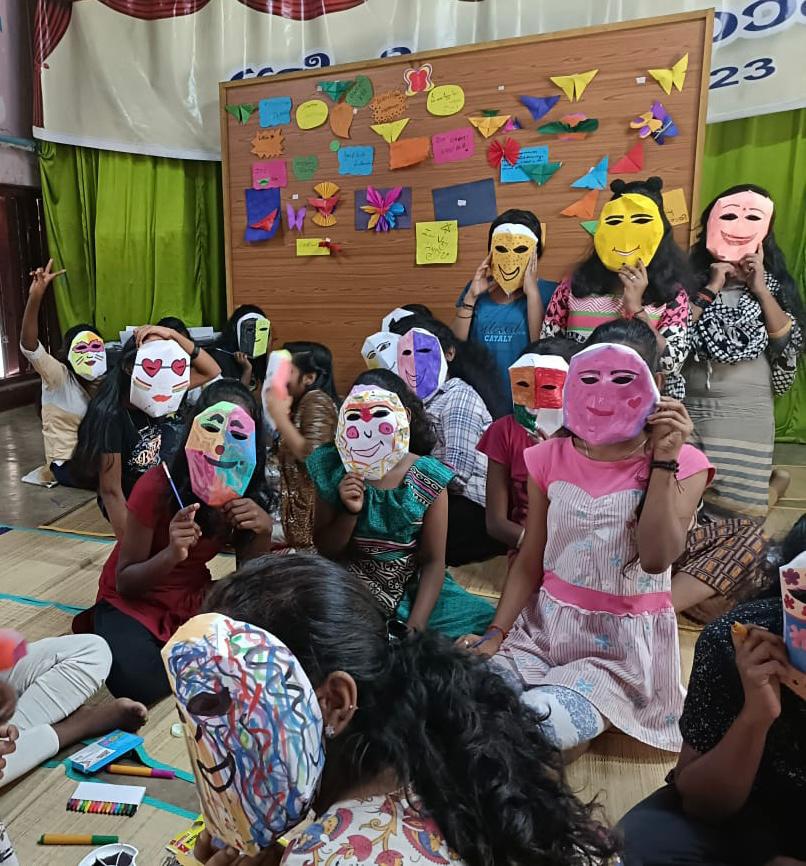
They engaged in dance and movement to emote and express their daily life and experiences, created masks to manifest their emotions physically, and developed and enacted roleplays of difficult situations that they found ways to overcome.
Exploring movement helped open up their bodies and the interaction with the fellows. In creating art and asserting their agency on their choice of materials and colours, the girls took charge and felt a sense of ownership towards the project. This feeling can be unfamiliar for a group that has been systematically neglected.
Girls in Chennai
A group of adolescent girls in Chennai form our first group of the Project Sakhi in NalandaWay. These girls, at a crucial stage of their lives, were preparing to give their 10th board exams when the community projects of the fellowship got them involved. Wondering if they’d be able to participate, the girls amazed us with their dedication, capacity to learn new skills, and their creativity.
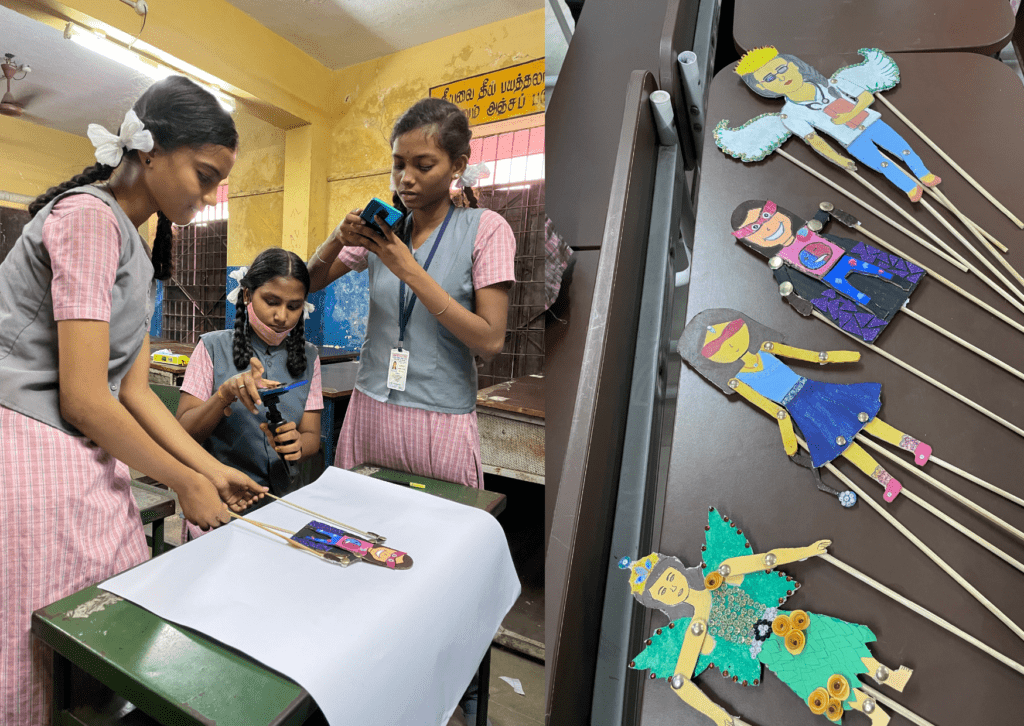
The fellows combined their expertise in storytelling, music, puppetry and augmented reality to develop a project that explores the girls’ strengths as superpowers and gives a new form to their love for storytelling.
The girls learnt about narrative journaling, a technique through which they explored their stories of strength and journey towards self-love. They went on to create puppets and weave stories that embody their strengths – stories that were inspired from their hope to overcome injustice they have experienced and/or observed.
The puppets evolved through sessions, gaining context through background scenery, vibrant costumes, and soundtracks – all thoughtfully created by the girls to bring out their superpowers. The fellows guided the girls to practise their photography skills with detail to lighting, positioning and setting up the scene to create a stop motion video, complete with narration through a voice-over. The last step involved familiarising the girls with the concept of augmented reality and an app that helped transform the stop motion videos into AR. It was fascinating to see an image of the puppet come to life when the phone was pointed to it.
All four projects brought out the intuitive nature of using an arts-based modality to explore the self, others and the world. Entering the world of virtual interaction has widened the scope of how digital and analogue methods can be blended to make art accessible to all, even in low resource settings.
Written by Noor Malik. Noor holds a Master’s in Clinical Psychology with a keen interest in socio-political systems. At NalandaWay, she focuses on the expressive arts vertical, manages projects in art and education, and contributes to research in mental health.
